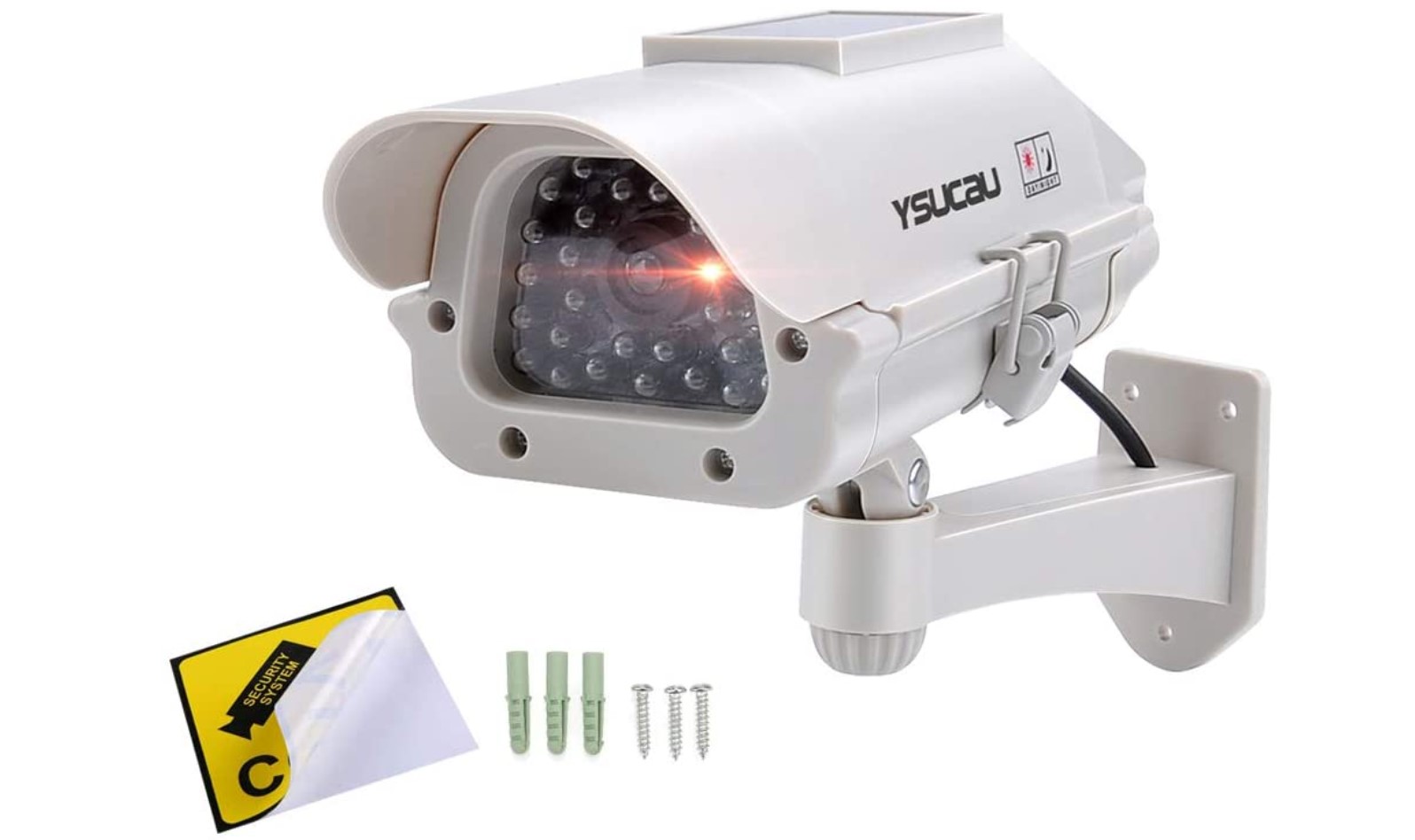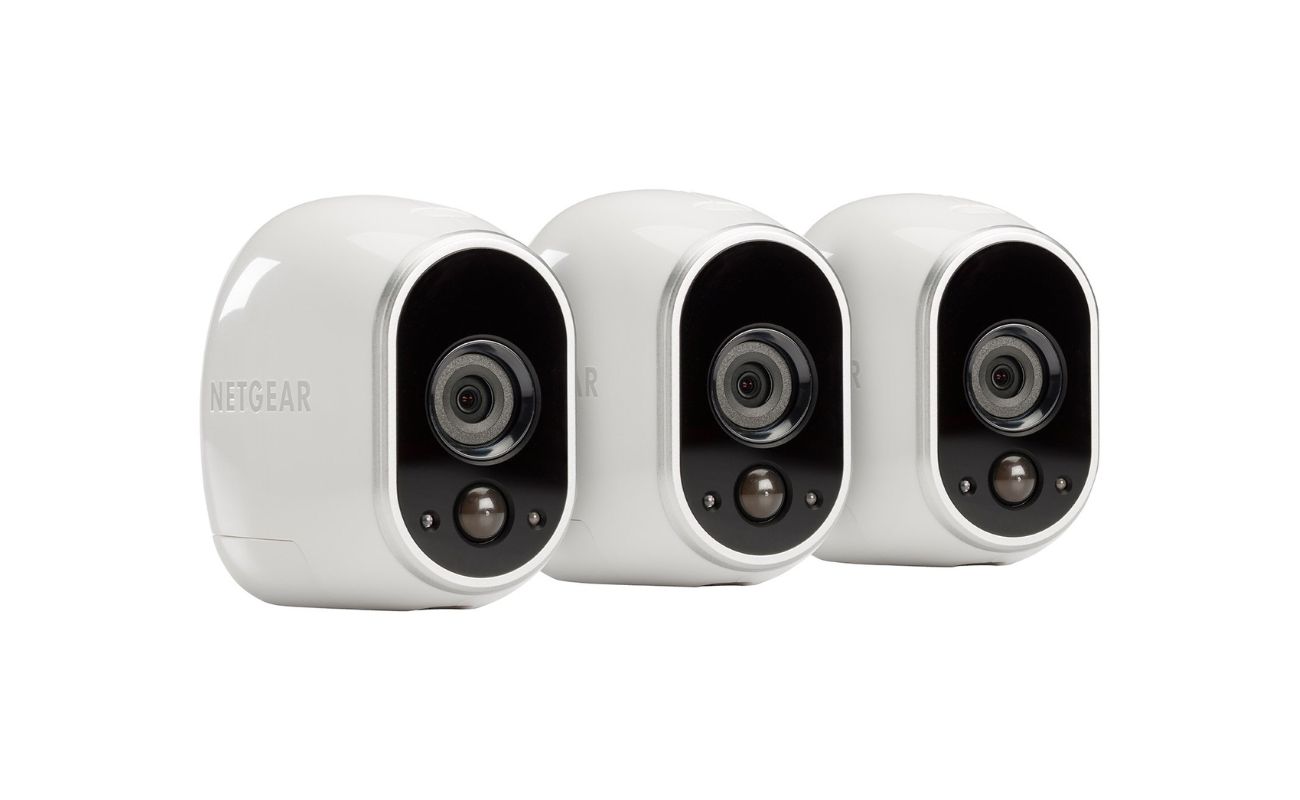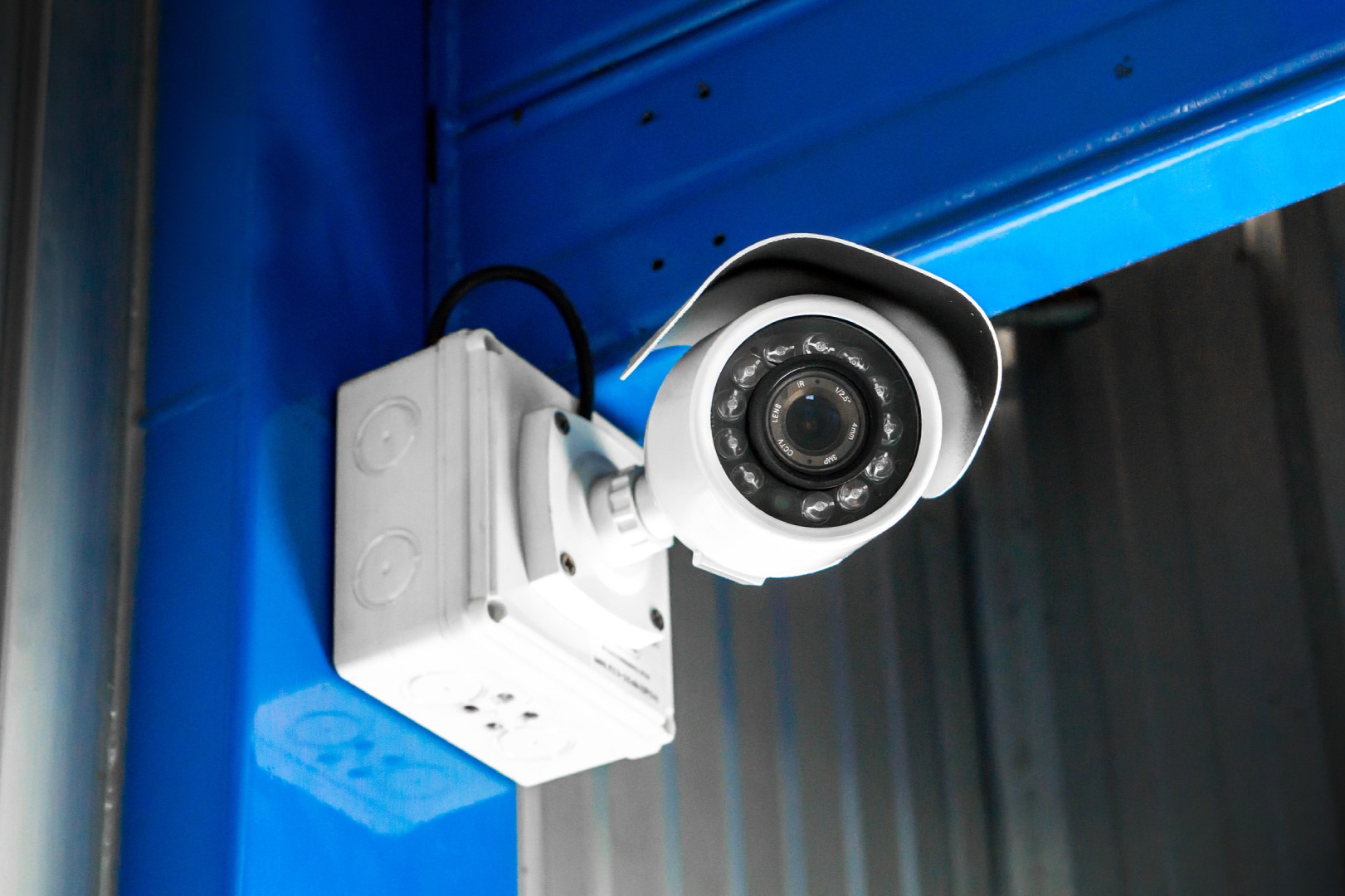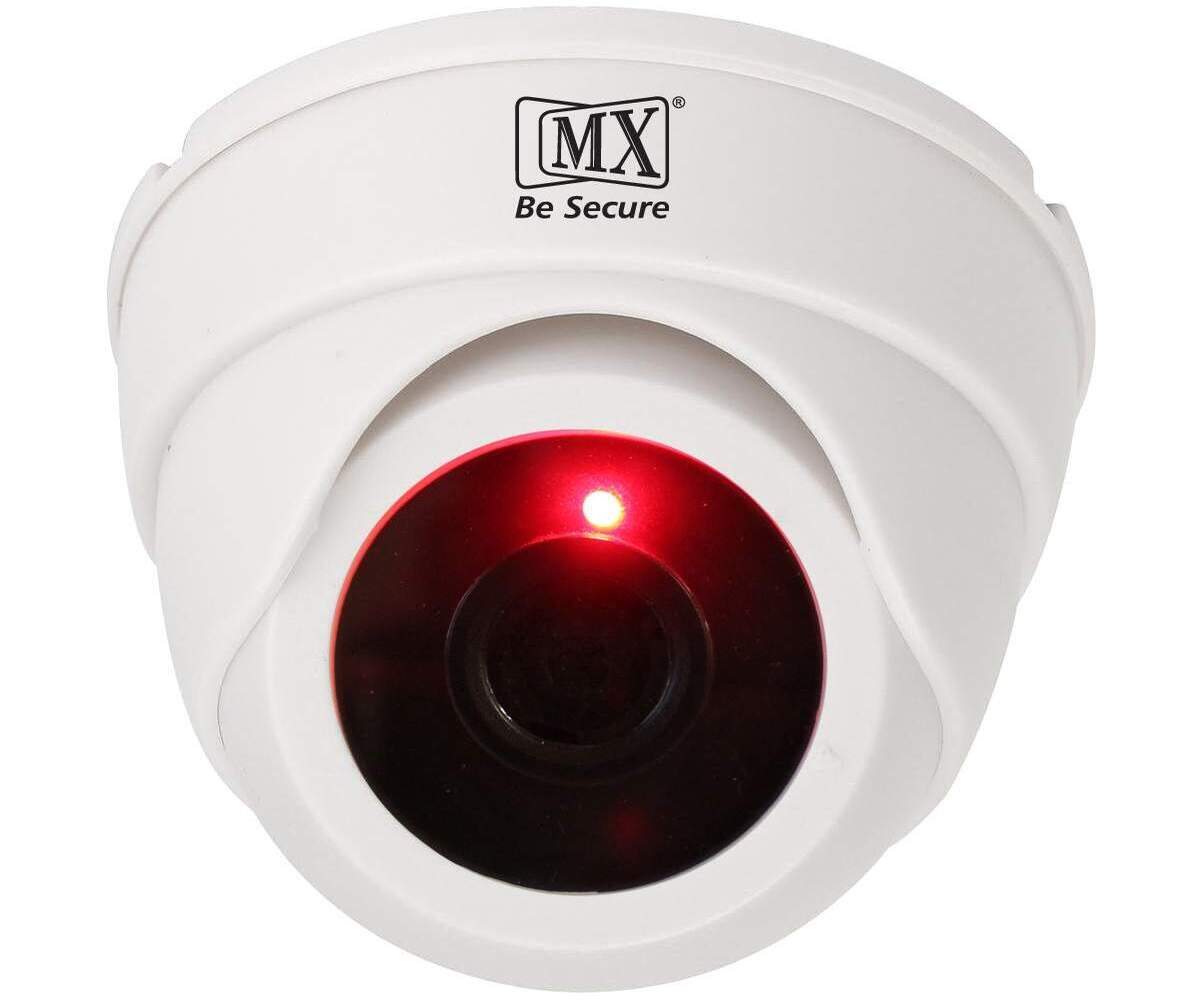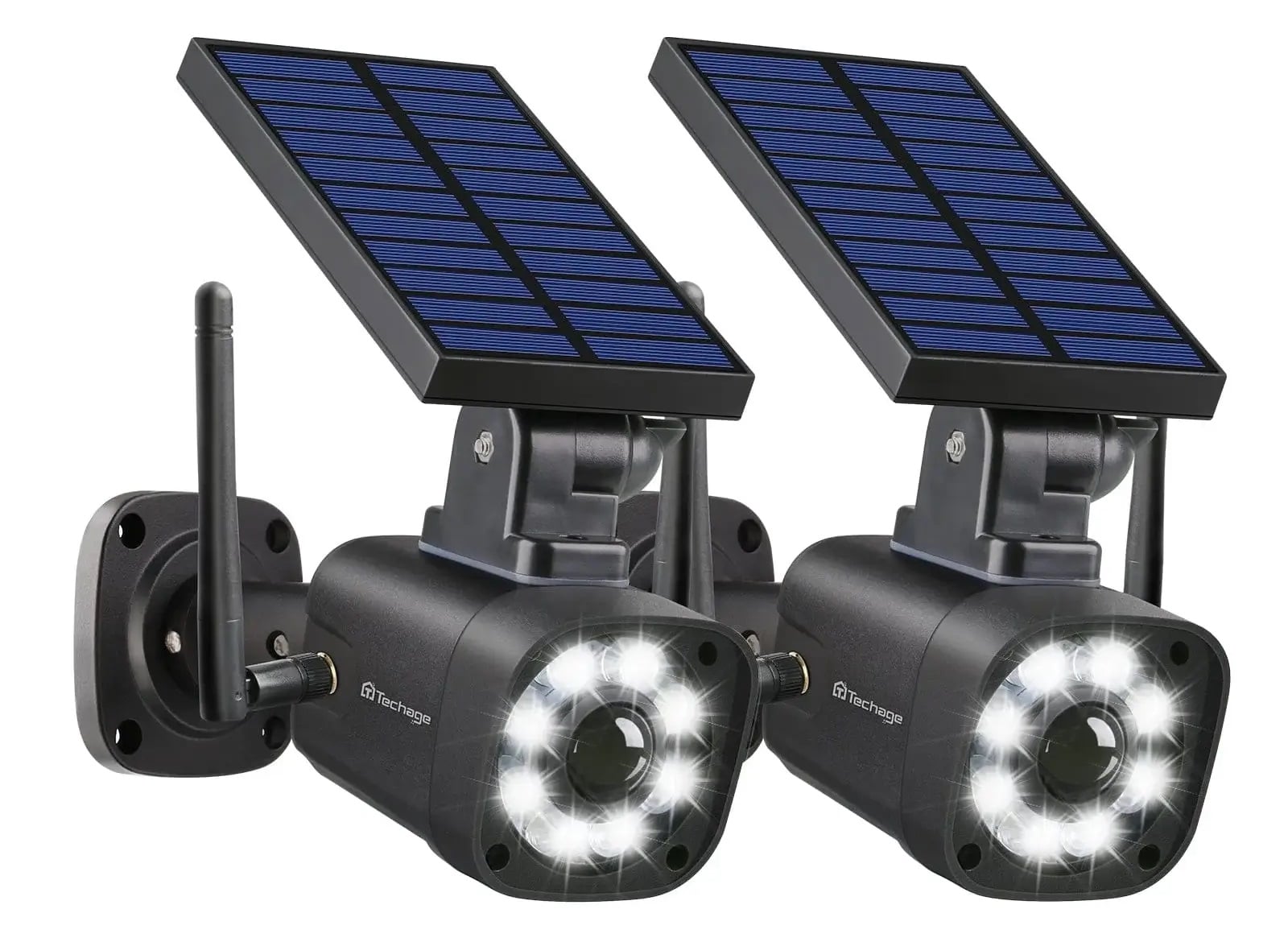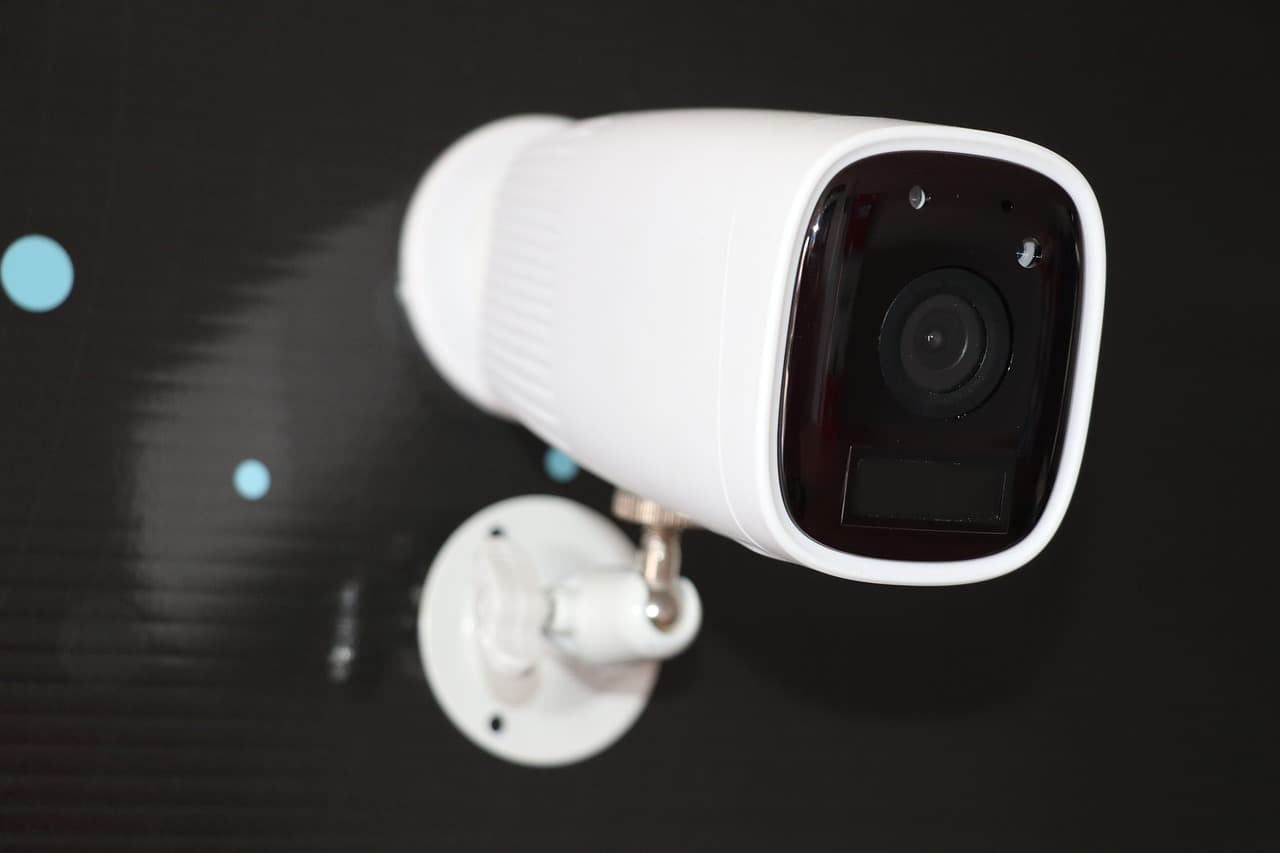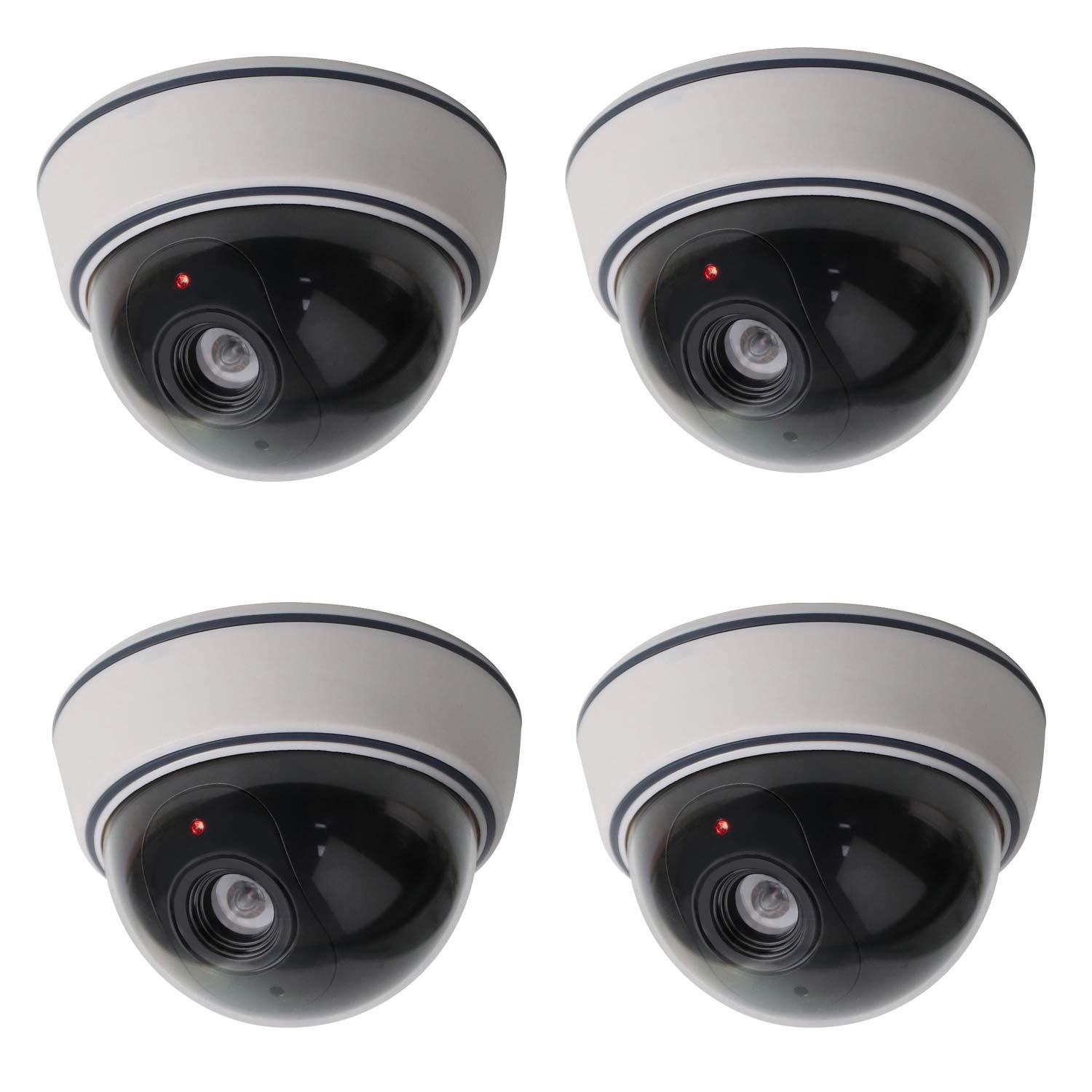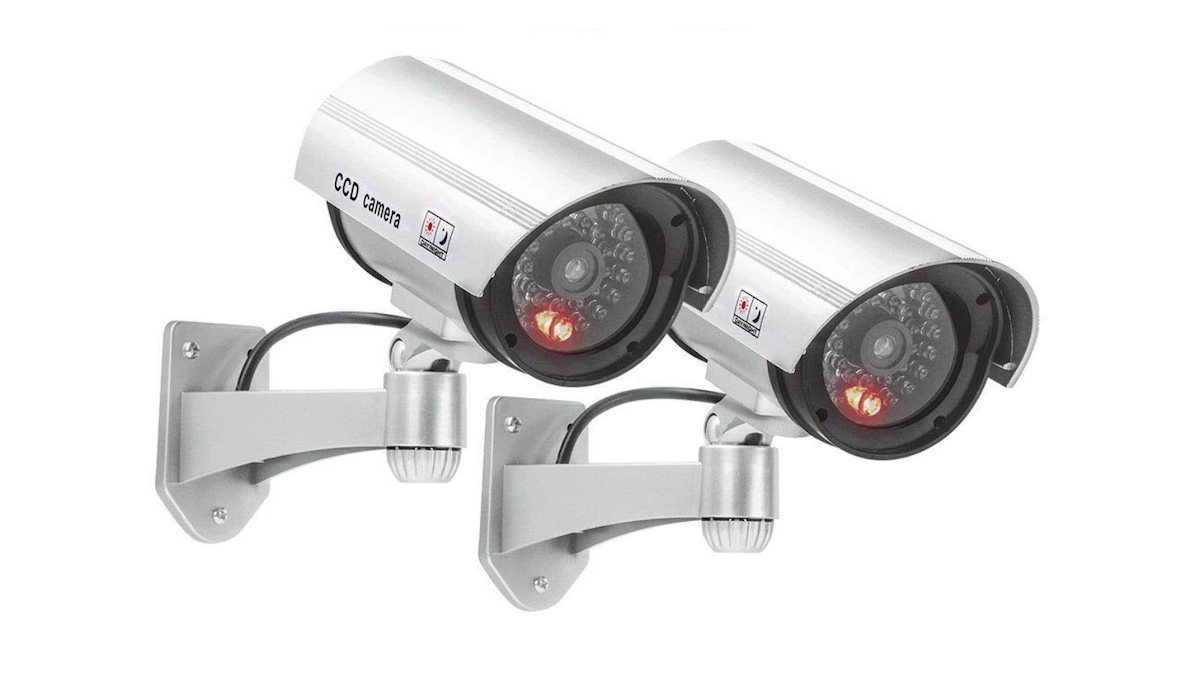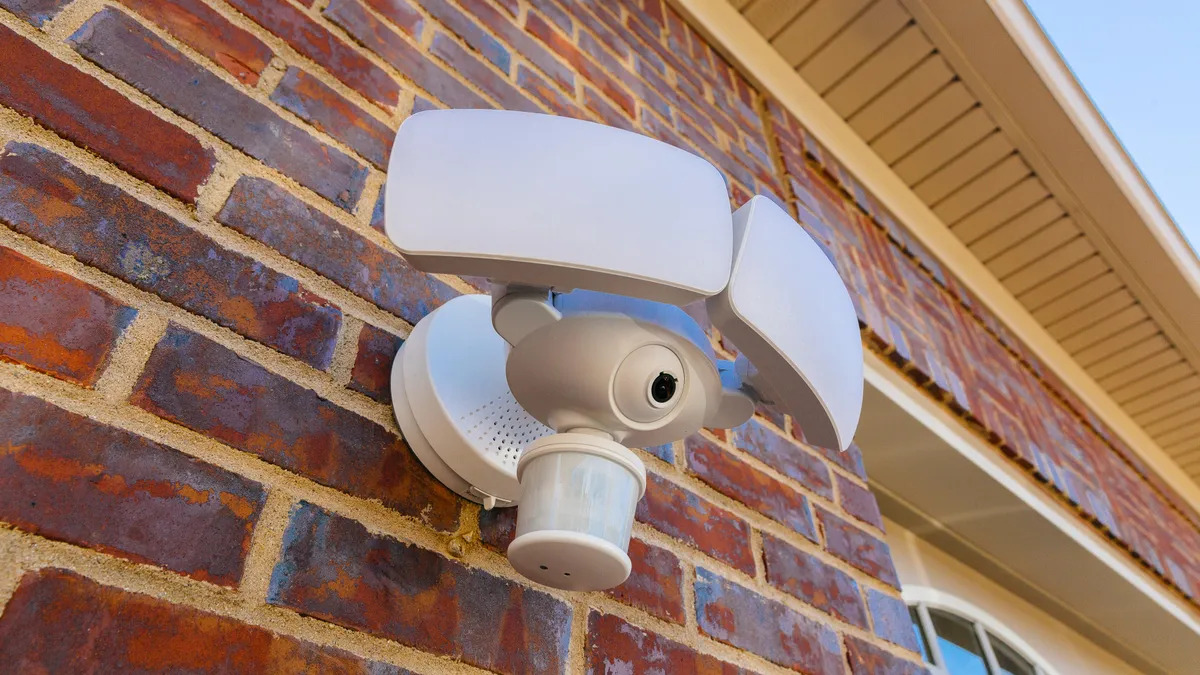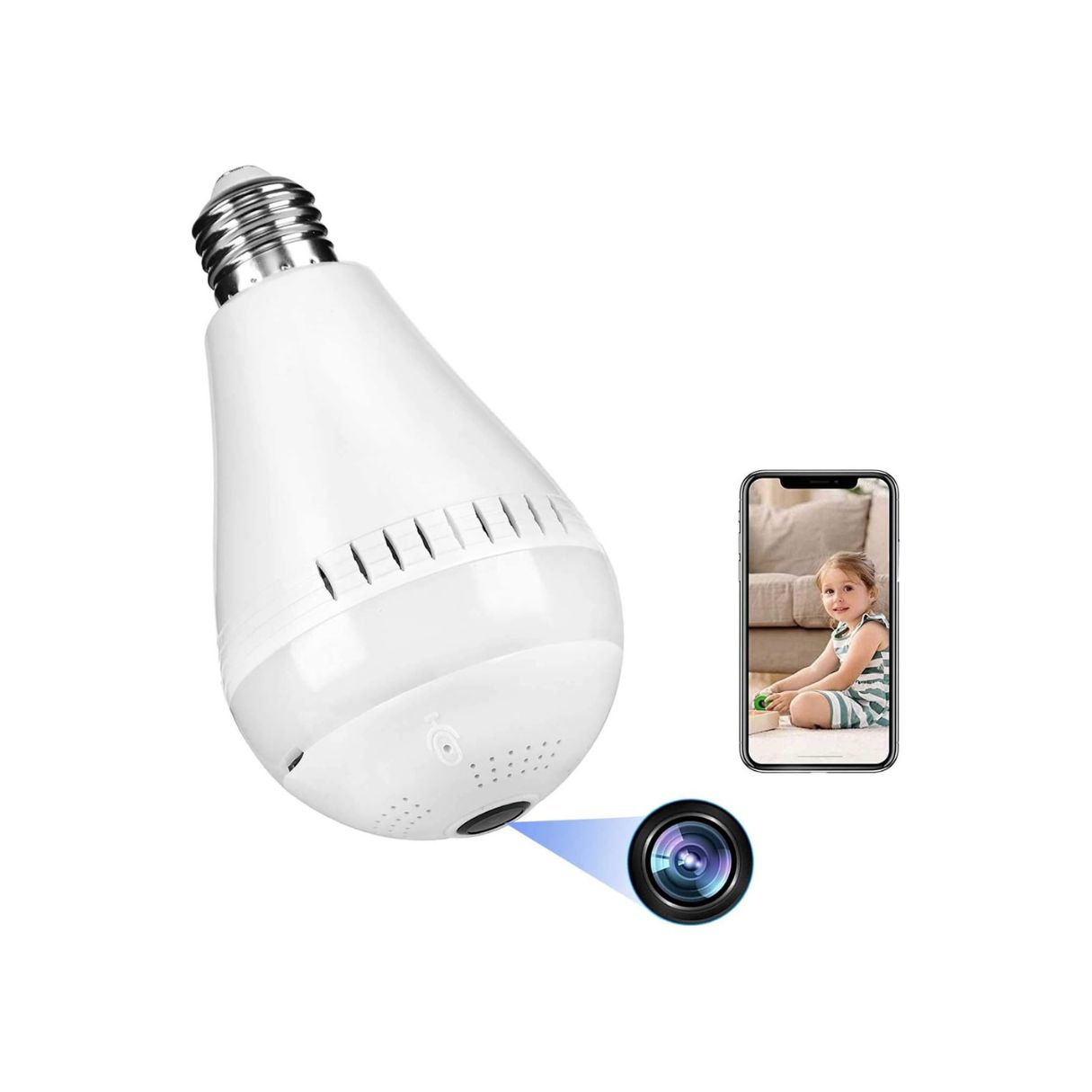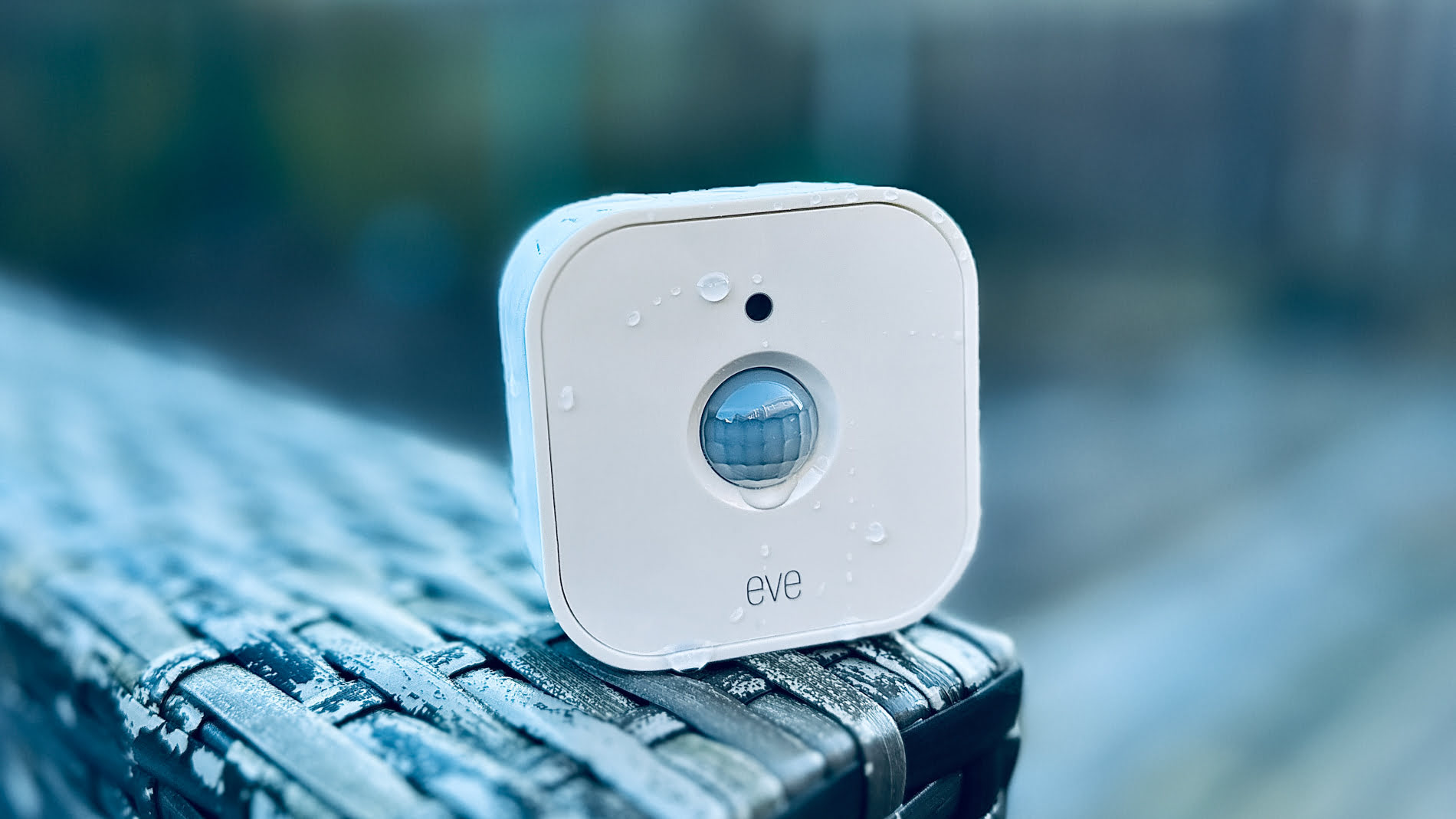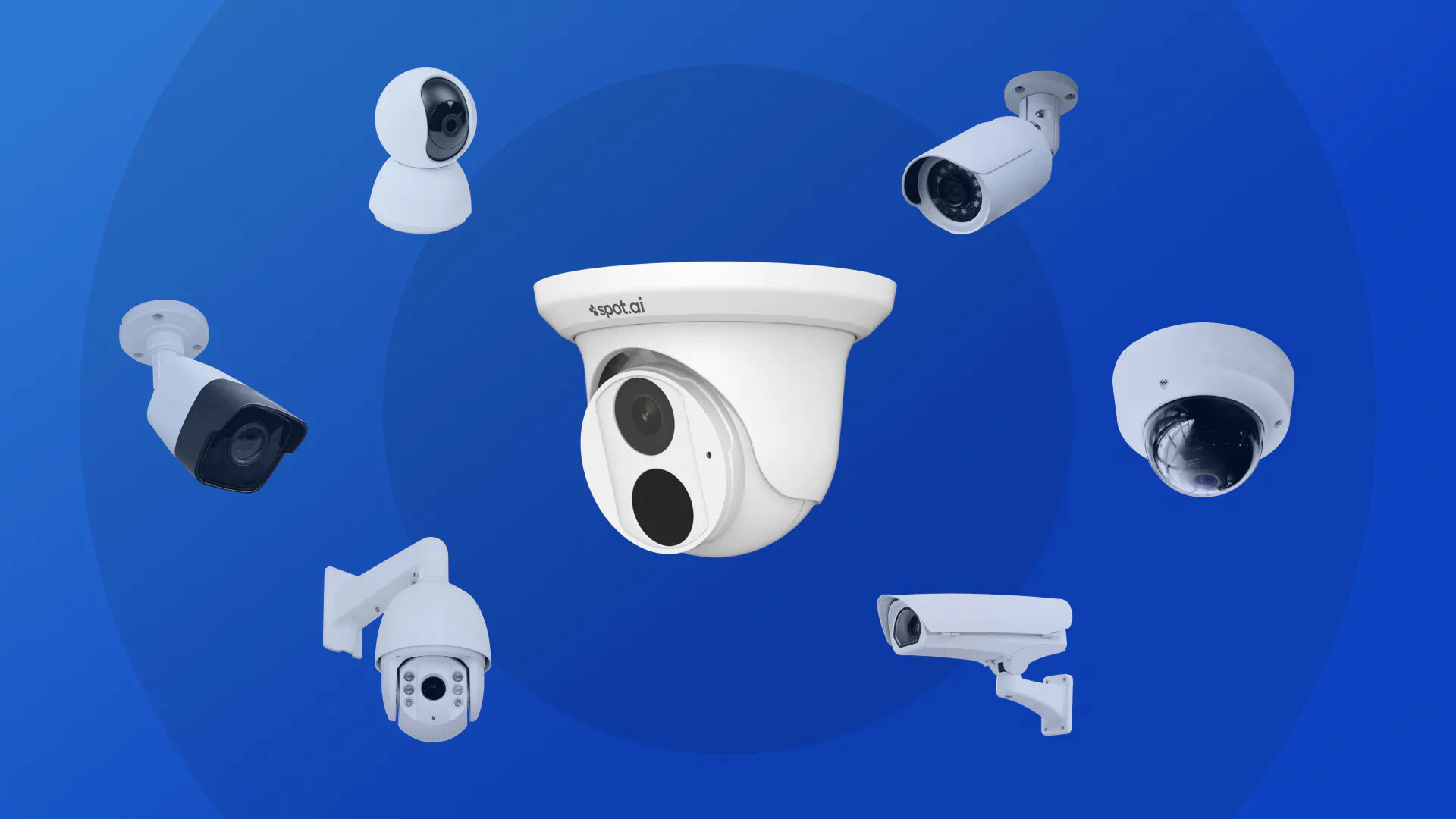Home>Home Security and Surveillance>How To Tell If A Security Camera Is Fake
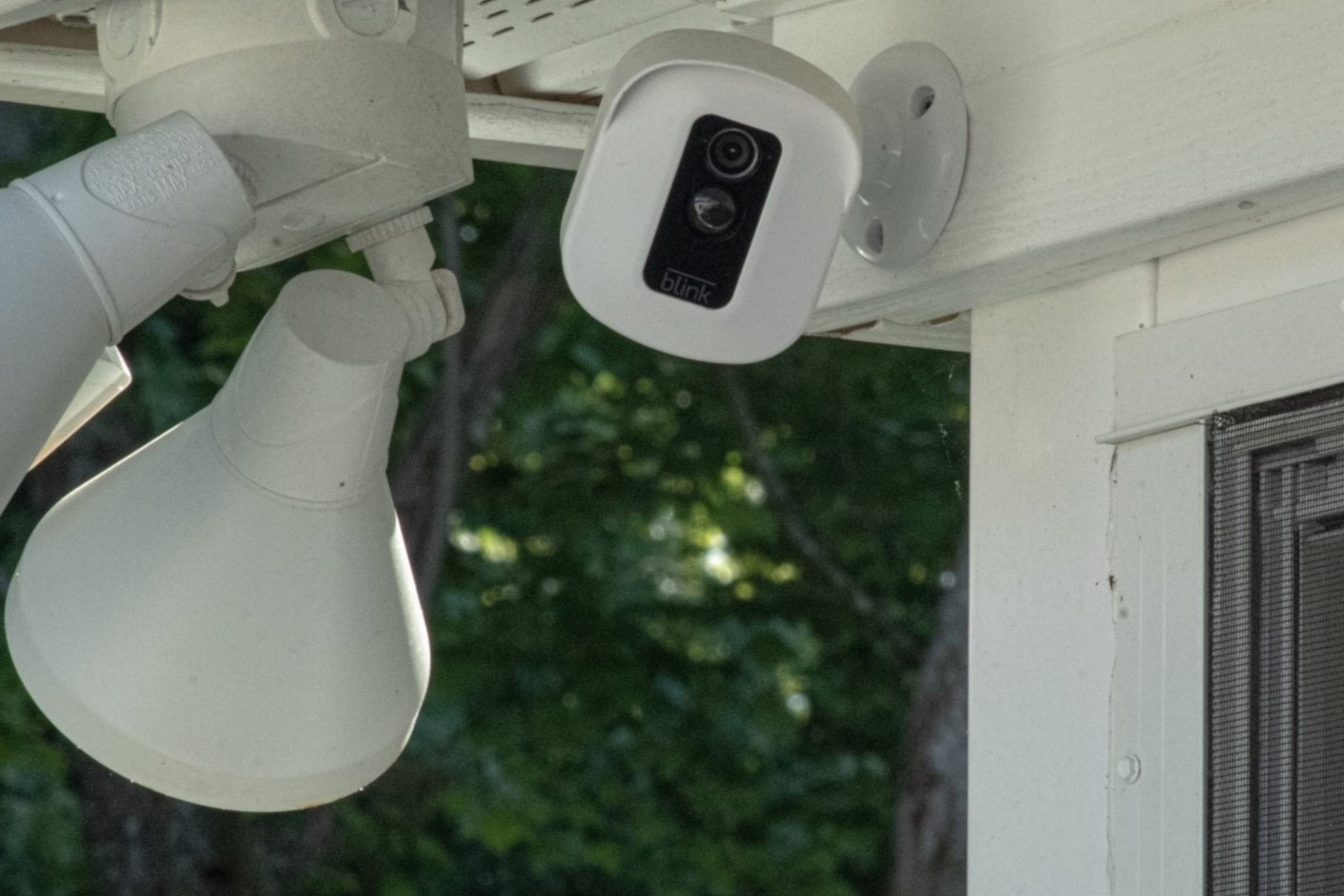

Home Security and Surveillance
How To Tell If A Security Camera Is Fake
Modified: October 27, 2024
Learn how to determine whether a security camera is genuine or fake for your home security and surveillance. Ensure your peace of mind with these expert tips.
(Many of the links in this article redirect to a specific reviewed product. Your purchase of these products through affiliate links helps to generate commission for Storables.com, at no extra cost. Learn more)
Introduction
Welcome to our comprehensive guide on how to identify fake security cameras.
In today’s world, home security and surveillance are top priorities for many homeowners. As technology continues to advance, more and more people are turning to security cameras to protect their homes and loved ones. The presence of security cameras can act as a deterrent to potential criminals, providing peace of mind and an added layer of security.
However, not all security cameras are created equal. There is a growing concern about the prevalence of fake security cameras in the market. These cameras, designed to look like genuine surveillance devices, aim to fool unsuspecting individuals into believing they are being monitored. This can lead to a false sense of security and leave homes vulnerable to potential threats.
The purpose of this article is to help you understand the importance of identifying fake security cameras and equip you with the knowledge to spot them. By being able to distinguish between real and fake cameras, you can make informed decisions when it comes to safeguarding your home and loved ones.
So, let’s dive in and explore the signs that indicate a security camera may be fake, as well as the potential risks associated with relying on counterfeit devices.
Key Takeaways:
- Fake security cameras can give a false sense of security, lack deterrence, and provide no evidence in case of a crime. It’s crucial to verify the authenticity of security cameras to ensure effective protection.
- When buying security cameras, look for visible cables, functioning LED lights, proper branding, and advanced features. Avoid unusually low-cost options and prioritize purchasing from reputable brands and authorized retailers.
Read more: How To Spot Fake Security Cameras
Purpose of Security Cameras
Before delving into the subject of identifying fake security cameras, it is essential to understand the fundamental purpose that these devices serve. Security cameras are designed to monitor and record activities in both residential and commercial settings. They act as silent sentinels, providing a constant watchful eye over our properties.
The primary goal of security cameras is to deter potential criminals from engaging in unlawful activities. The mere presence of these cameras can act as a powerful deterrent, as individuals are less likely to commit crimes if they know they are being monitored. In this way, security cameras can help prevent break-ins, theft, vandalism, and other illegal activities.
In addition to deterrence, security cameras also play a crucial role in capturing evidence in the event of a crime or incident. By recording any suspicious activities, security cameras assist law enforcement agencies in their investigations, ultimately increasing the chances of apprehending the criminals and recovering stolen property. This serves not only as a means of justice but also as a deterrent for potential future offenders.
Furthermore, security cameras provide homeowners and business owners with peace of mind. When you have the ability to monitor your property remotely or review recorded footage, you gain an added sense of security and control. This can be especially important for individuals who travel frequently or have valuable assets they wish to protect.
Overall, security cameras serve as a critical tool in enhancing the safety and security of our homes and businesses. They act as a first line of defense, offering protection, evidence, and peace of mind. However, it is important to ensure that the security cameras we rely on are genuine and not fake devices.
Importance of Identifying Fake Security Cameras
The prevalence of fake security cameras in the market is a growing concern for homeowners and businesses alike. These counterfeit devices are designed to mimic the appearance of real security cameras, but they lack the essential functionality and reliability that genuine cameras provide. It is of utmost importance to be able to identify fake security cameras for several reasons:
1. False Sense of Security: Relying on a fake security camera gives homeowners and business owners a false sense of security. They believe they are being monitored and protected when, in reality, they are not. This can lead to a decreased level of caution and leave properties vulnerable to potential threats.
2. Ineffective Deterrent: The primary purpose of security cameras is to deter potential criminals. However, fake cameras lack the ability to capture footage or provide genuine surveillance. Criminals who are well-versed in recognizing fake cameras may be more emboldened to commit crimes, knowing that they will not be caught on video.
3. Lack of Evidence: In the unfortunate event of a crime or incident, genuine security cameras provide valuable evidence that can aid in identifying the perpetrators and facilitating legal action. Fake cameras, on the other hand, provide no useful footage, making it challenging to hold criminals accountable for their actions.
4. Financial Loss: Investing in security cameras is a financial commitment, but it is an investment in the safety and security of your property. Falling victim to fake cameras means wasting money on devices that offer no real protection. By identifying fake security cameras, you can avoid financial loss and ensure that your investment is well-spent on reliable and effective surveillance.
5. Peace of Mind: A genuine security camera system provides peace of mind, giving homeowners and business owners the assurance that their property is being monitored and protected. Identifying fake cameras allows you to have confidence in your security measures and ensures that your loved ones, assets, and livelihood are safeguarded.
Given these important reasons, it is crucial to be able to distinguish between real and fake security cameras. By doing so, you can make informed decisions about the security measures you implement and ensure the safety of your property.
Signs to Look for in Fake Security Cameras
Identifying fake security cameras requires a keen eye and attention to detail. While some counterfeit devices can be incredibly convincing, there are several signs that can help you spot a fake camera. Here are some key indicators to look for:
- Lack of Cabling or Power Source: Genuine security cameras require power to function. If you notice a security camera without any visible cables or power source, it could be a sign of a fake camera. Legitimate cameras usually have cables running from the camera to the power source or a central control unit.
- Inactive or Non-functioning LED Lights: Many security cameras have LED lights that indicate their operational status. Fake security cameras may have non-functioning LED lights or no lights at all. Additionally, real cameras often have infrared (IR) LEDs for night vision. If the camera claims to have night vision but the IR LEDs are missing or not functioning, it may be a fake.
- Missing or Inadequate Branding: Look for proper branding and labeling on the camera. Genuine security cameras typically display the branding or logo of the manufacturer, along with model numbers or other identifying information. Fake cameras may lack branding altogether or have poor-quality labels that are easily peeling off.
- Inconsistent or Poor Build Quality: Pay attention to the build quality of the camera. Authentic security cameras are built to withstand outdoor conditions and are made from durable materials. Fake cameras may feel flimsy or have visible signs of poor craftsmanship, such as misaligned parts or cheap plastic construction.
- Limited or Non-existent Surveillance Footage: One of the most significant signs of a fake security camera is the absence of surveillance footage. Genuine cameras record and store footage for later review. If a camera claims to be recording but there is no way to access or retrieve the footage, it is likely a fake camera.
- Suspicious Placement or Angle: Take note of the camera’s placement and the angle at which it is positioned. Genuine security cameras are strategically placed to capture optimal views of the area under surveillance. Fake cameras may be installed in odd or ineffective locations, or they may be positioned at an incorrect angle.
- Lack of Unique Features or Advanced Functionality: Authentic security cameras often come with advanced features such as motion detection, pan-tilt-zoom functionality, or remote access capabilities. If the camera lacks these features, it could indicate that it is a fake.
- Price Discrepancies or Unusually Low Cost: While the price alone is not a definitive indicator, extremely low-cost security cameras should raise suspicion. Fake cameras are often priced significantly lower than genuine ones, as they lack the technology and reliability of legitimate devices.
- Absence of Security Camera Warning Signs or Stickers: Legitimate security cameras are often accompanied by warning signs or stickers to inform people that they are being monitored. If you don’t see any signs or stickers in the vicinity of the camera, it may not be a genuine surveillance device.
By carefully examining these signs, you can increase your chances of identifying fake security cameras and making informed decisions in safeguarding your property and loved ones.
Lack of Cabling or Power Source
One of the first signs to look for when identifying a potential fake security camera is the lack of cabling or power source. Authentic security cameras require a power source to operate effectively, whether it is through a direct electrical connection or the use of batteries. Some cameras may also require a network cable for data transmission.
When inspecting a security camera, check for visible cables running from the camera to a power source or a central control unit. Legitimate cameras typically have these cables neatly tucked away or hidden to prevent tampering. The absence of cables could suggest that the camera is not connected to any power source, raising suspicion that it may be a fake device.
It is important to note that some advanced security camera models may utilize wireless technology, allowing them to operate without visible cables. In such cases, the absence of cables may not necessarily indicate a fake camera. However, it is still worth investigating further by checking if the camera has a power source, such as a battery compartment or a charging port.
Additionally, fake security cameras may attempt to mimic the appearance of genuine cameras by imitating the cabling. However, upon closer inspection, you may notice that the cables are not functional or are simply cosmetic, serving no purpose other than to deceive unsuspecting individuals.
When assessing the cabling and power source of a security camera, it is crucial to remember that genuine cameras rely on a steady supply of power to operate effectively. If you encounter a camera without any visible power source or cabling, it is a strong indication that it may be a fake security camera.
To further verify if a camera is genuine, you can also refer to the manufacturer’s specifications and installation guidelines. These resources often provide information on the necessary power supply and cabling requirements for the specific camera model.
By being vigilant and attentive to the presence or absence of cabling and power sources, you can increase your chances of accurately identifying fake security cameras and making informed decisions when it comes to protecting your property and loved ones.
Read more: How To Tell If A Home Security Camera Is On
Inactive or Non-functioning LED Lights
LED lights are commonly found on security cameras and serve multiple purposes. These lights not only indicate the operational status of the camera but also enhance its visibility in low-light conditions. Therefore, they are an important feature to consider when identifying fake security cameras.
When examining a security camera, look for LED lights that should be present, such as power and activity indicators. Authentic security cameras often have visible LED lights that are active and functioning properly. These lights may be located around the lens or on the camera’s housing.
In contrast, fake security cameras may have inactive or non-functioning LED lights. These lights may be missing altogether, or they may be present but fail to illuminate when the camera is powered on. This discrepancy suggests that the camera is not actually monitoring or recording any activity, as these lights serve as visual indicators of its functionality.
Additionally, real security cameras equipped with night vision capabilities typically have infrared (IR) LEDs. These IR LEDs emit infrared light, allowing the camera to capture clear surveillance footage even in complete darkness. When inspecting a camera claiming to have night vision, ensure that the IR LEDs are present and functioning. Fake cameras may lack these essential components or have non-functioning IR LEDs, indicating that their night vision capabilities are not genuine.
It is worth noting that some advanced security camera models offer the option to disable or dim the LED lights for covert surveillance. In these cases, the absence of visible LED lights may not automatically indicate a fake camera. However, if the camera claims to have visible LED lights but they are inactive or non-functioning, it is a strong indication of a counterfeit device.
To further validate the functionality of the LED lights, you can refer to the camera’s user manual or contact the manufacturer for assistance. These resources can provide specific information on the expected behavior of the LED lights for the particular camera model you are examining.
By paying attention to the presence and performance of LED lights, you can improve your ability to identify fake security cameras and make informed decisions when it comes to safeguarding your property and ensuring effective surveillance.
Missing or Inadequate Branding
When it comes to identifying fake security cameras, one important factor to consider is the presence and quality of branding. Legitimate security camera manufacturers often take pride in their products and make efforts to establish their brand identity through visible logos, labels, and other identifying marks.
When examining a security camera, look for proper branding and labeling. Genuine cameras typically display the manufacturer’s logo, brand name, or model number somewhere on the device. These markings should be clear, well-defined, and properly affixed to the camera’s housing.
In contrast, fake security cameras may either lack any branding or have poor-quality labels that are easily peeling off or appear hastily applied. The absence of clear branding or the presence of subpar labeling suggests that the camera may not be a genuine product.
It is worth noting that some counterfeit cameras may attempt to imitate the branding of well-known manufacturers. However, upon closer inspection, you may notice subtle differences in the logo design, font used, or overall quality of the label. Take the time to compare the branding on the camera to official product images or documentation from the manufacturer’s website to spot any inconsistencies.
In addition to the camera itself, genuine security cameras often come with branded accessories, such as mounting brackets, power adapters, or cables. These accessories should also display the manufacturer’s branding. If the accessory packaging or labels show signs of low quality or lack proper branding, it may indicate the presence of fake components.
Proper branding on a security camera serves not only as an assurance of authenticity but also as an indicator of the manufacturer’s commitment to quality and customer service. Legitimate manufacturers are more likely to provide reliable products and offer support should any issues arise.
If you come across a security camera without any visible branding or with inadequate labeling, exercise caution before considering it as a reliable surveillance device. Look for genuine security camera models from reputable manufacturers to ensure that you are investing in a high-quality product that meets your security needs.
Inconsistent or Poor Build Quality
When evaluating the authenticity of a security camera, it is essential to assess its build quality. Genuine security cameras are designed to withstand outdoor conditions and offer long-lasting durability. In contrast, fake security cameras often exhibit inconsistencies or poor craftsmanship, which can be indicative of their counterfeit nature.
Take a close look at the camera’s overall construction and materials used. Authentic security cameras are typically made from sturdy and weather-resistant materials such as metal or durable plastics. These materials not only protect the internal components but also ensure the camera can withstand exposure to the elements.
Counterfeit security cameras, on the other hand, may feel flimsy or lightweight, revealing lower-quality materials and construction. They may have visible signs of poor craftsmanship, such as misaligned parts, rough edges, or uneven surfaces. Additionally, if the camera appears excessively cheap or low-cost compared to similar models from reputable manufacturers, it is likely a red flag indicating subpar build quality.
Another aspect to consider is the presence of seals or gaskets that protect the camera from dust, moisture, and tampering. Genuine security cameras have these seals in place to ensure the internal components remain protected and operational. Fake cameras may lack these seals or have poorly fitted ones, compromising their ability to withstand environmental conditions.
It’s important to note that some counterfeit cameras may attempt to mimic the appearance and build quality of genuine models. However, upon closer inspection, you may still notice subtle differences that indicate lower quality. Pay attention to details such as the feel of the camera in your hands, the smoothness of rotating parts (if applicable), and the overall reliability of the camera’s construction.
By carefully assessing the build quality of a security camera, you can increase your chances of identifying fake devices. Opting for security cameras from reputable manufacturers ensures that you are investing in reliable devices that will withstand the test of time and effectively protect your property.
Look for a blinking light or a fake wire on the camera. Real security cameras usually have a steady light and real wires.
Limited or Non-existent Surveillance Footage
One of the most telling signs of a fake security camera is the absence or limited availability of surveillance footage. Genuine security cameras are designed to capture and store surveillance footage, providing a means of reviewing and analyzing any recorded events or incidents.
When assessing a security camera, inquire whether it has the capability to record and store video footage. Legitimate cameras typically offer various recording options, such as local storage on a memory card or network-attached storage (NAS) device, or cloud-based storage. These options allow for easy access to recorded footage when needed.
Fake security cameras, however, lack the necessary technology to record or store surveillance footage. They may have non-functioning or non-existent storage options, leaving users with no way to retrieve or review any captured events. Keep in mind that some counterfeit cameras may even simulate recording features, such as blinking lights or fake storage indicators, further deceiving unsuspecting individuals.
If you encounter a camera without any available means to access or retrieve surveillance footage, it is a strong indication of a fake security camera. Authentic security camera systems provide convenient ways to access the recorded footage, whether it be through a mobile app, web portal, or dedicated video management software.
In addition, genuine security cameras often allow users to customize the video recording settings, such as adjusting the resolution, frame rate, or motion detection sensitivity. They also provide options for continuous recording or scheduled recording based on specific time intervals. The absence of these customizable settings might be another indicator of a fake camera.
To ensure that you are investing in a genuine security camera with reliable surveillance footage capabilities, it is recommended to research reputable manufacturers and read product reviews. By choosing a reliable and trusted brand, you can have confidence in the camera’s ability to capture and store high-quality surveillance footage.
Remember that security cameras serve the purpose of providing evidence in the event of a crime or incident. Lack of surveillance footage can significantly hinder investigations and limit the effectiveness of your security measures. By carefully evaluating the availability and functionality of surveillance footage, you can better identify fake security cameras and make informed decisions for protecting your property.
Suspicious Placement or Angle
When identifying fake security cameras, it is essential to consider the placement and angle at which the camera is positioned. Genuine security cameras are strategically placed to maximize coverage and capture optimal views of the area under surveillance. On the other hand, fake cameras may exhibit suspicious placement or angles that raise doubts about their authenticity.
When examining a security camera, assess its placement in relation to the area being monitored. Authentic cameras are often positioned in locations that provide a clear and unobstructed view of the surroundings. They may be mounted high on walls or ceilings to prevent tampering and provide a wider field of view.
Fake security cameras, however, may have noticeable placement issues. They may be situated in areas where they are easily accessible or less likely to capture important details. They may also be positioned at odd angles that limit their effectiveness in surveillance.
Another red flag to watch for is a camera that appears to be pointed in the wrong direction. Genuine cameras are typically adjusted to face areas of interest, such as entryways, driveways, or high-traffic zones. Fake cameras may point in random or irrelevant directions, further suggesting their lack of functionality.
Additionally, consider the visibility of the camera to potential intruders. Authentic security cameras are often intentionally visible, serving as a visual deterrent to potential criminals. They are equipped with housings that clearly indicate the presence of surveillance. Fake cameras may try to imitate this visibility but may not have the same level of distinctiveness or deterrent effect.
Keep in mind that some advanced security camera models offer discreet or covert options for surveillance. These cameras may have a different design and intentionally blend into the surrounding environment. However, for these types of cameras, there are usually other indicators, such as appropriate branding or labeling, to confirm their authenticity.
By paying attention to the placement and angle of a security camera, you can increase your chances of identifying fake devices. Genuine security cameras are thoughtfully positioned to maximize their effectiveness, while fake cameras often exhibit suspicious placement or angles that may compromise their functionality and reliability.
If you encounter a security camera with questionable placement or angle, it is advisable to consult with security experts or professionals who can provide guidance and help assess its authenticity. Remember, investing in genuine security cameras ensures that your property is effectively monitored and protected.
Lack of Unique Features or Advanced Functionality
When determining the authenticity of a security camera, it is important to consider the presence of unique features and advanced functionality. Genuine security cameras often come equipped with innovative technologies and capabilities that enhance their performance and provide added value to users.
Take a careful look at the features and specifications of the security camera you are examining. Legitimate cameras usually offer unique features or advanced functionalities that set them apart from cheap or counterfeit alternatives.
Genuine security cameras may include features such as:
- Motion detection: Cameras equipped with motion detection technology can trigger recordings or alerts when motion is detected within the field of view.
- Night vision: Cameras with night vision capabilities utilize infrared (IR) LEDs to capture clear surveillance footage in low-light or dark conditions.
- Pan, tilt, and zoom (PTZ): PTZ cameras can be remotely controlled to pan horizontally, tilt vertically, and zoom in or out, providing greater flexibility in monitoring different areas.
- Two-way audio: This feature allows users to listen to audio from the environment being monitored and communicate with individuals on-site using a built-in microphone and speaker.
- Mobile app integration: Many genuine security cameras offer mobile apps that enable remote viewing, control, and access to recorded footage from smartphones or tablets.
- Cloud storage: Cameras with cloud storage capabilities allow for convenient access and backup of surveillance footage through online cloud platforms.
Fake security cameras may lack these advanced features or offer limited or ineffective versions of them. They may claim to include certain functionalities but fail to deliver on their promises. For example, a fake camera claiming to have motion detection may not actually be capable of accurately detecting and recording motion.
Additionally, counterfeit cameras may try to imitate advanced features by incorporating cosmetic elements or buttons that mimic the appearance of genuine functionalities. However, upon closer inspection, you may notice that these elements do not actually work or have any genuine purpose.
To verify the authenticity of a camera’s features, refer to the manufacturer’s documentation or official website. Genuine manufacturers will provide detailed information about the unique features and advanced functionalities of their security cameras.
By ensuring that a security camera possesses unique and advanced features, you can have confidence in its authenticity and the enhanced capabilities it provides for effective surveillance and protection of your property.
Price Discrepancies or Unusually Low Cost
When navigating the market for security cameras, it is essential to be aware of price discrepancies or unusually low-cost options. While price alone is not a definitive indicator of a fake security camera, it can be a red flag that warrants further investigation.
Genuine security cameras are typically priced based on several factors, including the quality of materials used, advanced features, brand reputation, and customer support. These factors contribute to the overall value of the camera and the level of security it provides.
If you come across a security camera that is priced significantly lower than other models on the market, it is crucial to exercise caution. Keep in mind that counterfeit or fake security cameras are often produced using cheaper materials and may lack the advanced features and reliability of genuine devices. Consequently, these cameras can be manufactured and sold at a lower cost compared to their authentic counterparts.
However, it is important to note that price discrepancies can also occur due to sales, discounts, or promotions. Some legitimate manufacturers may offer competitive pricing to make their products more accessible to a wider audience. Therefore, it is important to consider other factors alongside the price to make an informed decision about the camera’s authenticity.
When evaluating the price of a security camera, it is advisable to research reputable brands and compare prices across various sources. Take the time to read reviews and gather information about the camera’s specifications, features, and customer feedback. This will allow you to make a more accurate assessment of whether the price aligns with the quality and functionality you expect from a genuine security camera.
Remember that investing in a reliable and high-quality security camera is an essential aspect of protecting your property and loved ones. While it may be tempting to opt for a cheaper option, it is vital to prioritize the camera’s effectiveness and longevity rather than solely focusing on cost.
If you find a security camera at an unusually low price, it is recommended to proceed with caution. Verify the brand’s reputation, check for customer reviews or testimonials, and reach out to the manufacturer or authorized retailers for additional information. This due diligence will help you make an informed decision and avoid falling victim to a fake security camera.
Absence of Security Camera Warning Signs or Stickers
One often overlooked but significant indicator of a fake security camera is the absence of warning signs or stickers that alert individuals to the presence of surveillance. Legitimate security cameras are typically accompanied by signage or stickers that serve as a visual deterrent and notify people that they are being monitored. The absence of such warning signs or stickers can raise doubts about the authenticity of the camera.
When examining a security camera, assess the surrounding area for any signs or stickers indicating the presence of surveillance. These signs are commonly placed near the entrance or in highly visible locations to ensure they are clearly seen by anyone entering the premises.
Authentic security camera warning signs often feature bold and easily legible text, usually with phrases like “24-hour video surveillance” or “security camera in use.” These signs may also include symbols representing a camera or warning icon to further emphasize their message.
The purpose of these warning signs is twofold. Firstly, they act as a visual deterrent, making potential intruders think twice before targeting the property. Secondly, they serve as a legal notice, informing individuals that their actions may be recorded and monitored.
In contrast, fake security cameras are less likely to be accompanied by warning signs or stickers. Counterfeit manufacturers aim to replicate the appearance of genuine cameras without providing the necessary supporting elements that contribute to a comprehensive security system.
It is important to note that some individuals may intentionally place fake security cameras as a deterrent, even without accompanying warning signs or stickers. However, this practice is generally discouraged, as it can lead to a false sense of security without providing any actual surveillance or protection.
When assessing the authenticity of a security camera, be sure to look for warning signs or stickers that are typically associated with genuine surveillance systems. Verify the presence of these signs or stickers by contacting the property owner or consulting with security professionals who can provide guidance.
Remember that a comprehensive security system encompasses not only the cameras themselves but also the supporting elements that reinforce their presence. By ensuring the presence of warning signs or stickers, you can enhance the deterrent effect of your security measures and help maintain a safe and secure environment.
Potential Risks Associated with Fake Security Cameras
Fake security cameras pose several potential risks that can compromise the safety and security of your property. It is crucial to understand these risks in order to make informed decisions when implementing a surveillance system:
1. False Sense of Security: Relying on fake security cameras can create a false sense of security. You may believe that your property is being monitored and protected when, in reality, there is no genuine surveillance in place. This can lead to complacency and a lack of necessary precautions, leaving your property vulnerable to potential threats.
2. Lack of Deterrence: The presence of genuine security cameras acts as a powerful deterrent to potential criminals. However, fake cameras lack the ability to capture footage or provide genuine surveillance. Criminals who are experienced in recognizing fake cameras may be more confident in their criminal activities, knowing that they are not being watched. This can increase the risk of break-ins, theft, vandalism, and other criminal acts.
3. Ineffective Investigation: In the unfortunate event of a crime or incident, genuine security cameras provide valuable evidence that can aid in identifying the perpetrators and facilitating legal action. Fake cameras offer no useful footage, making it difficult to hold criminals accountable for their actions. This can hinder investigations and potentially hinder the chances of justice being served.
4. Financial Loss: Investing in security cameras is a financial commitment aimed at enhancing the safety and security of your property. Falling victim to fake cameras means wasting money on devices that offer no real protection. Additionally, any losses resulting from criminal activities that could have been prevented with genuine security cameras can result in significant financial losses.
5. Missed Opportunity for Upgrades: Genuine security cameras often come with advanced features and capabilities that improve surveillance effectiveness. By investing in fake cameras, you miss out on the opportunity to benefit from these upgrades, such as motion detection, night vision, or remote access functionality, which can enhance overall security and provide valuable insights into activities on your property.
6. Lack of Support and Warranty: Authentic security cameras are typically backed by a manufacturer’s warranty and provide access to customer support, ensuring prompt assistance in case of any issues. Fake cameras rarely come with warranty coverage or reliable customer support, leaving you without recourse if the device malfunctions or fails to meet your expectations.
It is crucial to recognize these potential risks and make informed decisions when choosing a security camera system. By investing in genuine and reliable security cameras, you can ensure the safety of your property, deter potential criminals, and increase the chances of identifying and apprehending perpetrators in the event of a crime.
How to Verify the Authenticity of a Security Camera
Verifying the authenticity of a security camera is crucial to ensure that you are investing in a reliable and effective surveillance system. Here are some steps to help you verify the authenticity of a security camera:
1. Research Reputable Brands: Start by researching reputable manufacturers known for their quality security camera systems. Look for well-established brands with positive customer reviews and a proven track record in the industry. These manufacturers are more likely to produce genuine and reliable security cameras.
2. Check for Genuine Branding: Examine the security camera for proper branding and labeling. Genuine manufacturers typically display their logo, brand name, or model number on the camera’s housing. Compare the branding to official product images and documentation from the manufacturer’s website to ensure that it is consistent and not a counterfeit imitation.
3. Purchase from Authorized Retailers: To reduce the risk of purchasing fake security cameras, buy from authorized retailers or directly from the manufacturer’s official website. This ensures that you are obtaining the camera from legitimate sources and increases the likelihood of receiving genuine products.
4. Verify Serial Numbers: Genuine security cameras often come with unique serial numbers that can be used to verify their authenticity. Check if the camera’s serial number matches the information provided by the manufacturer or authorized retailer. This step can help confirm that the camera is an authentic product.
5. Consult with Security Professionals: If you have concerns or doubts about the authenticity of a security camera, consult with security professionals or experts. They can provide guidance and advice based on their experience and knowledge in the industry. Their insights can help you make an informed decision and avoid falling victim to fake cameras.
6. Consider Warranty and Support: Authentic security cameras typically come with manufacturer warranties and reliable customer support. Check if the camera you are considering offers warranty coverage and accessible customer support channels. This demonstrates the manufacturer’s commitment to its product’s quality and provides peace of mind in case of any issues or concerns.
7. Read Product Reviews: Take the time to read customer reviews and testimonials for the security camera you are interested in. Genuine customers’ experiences can provide valuable insights into the camera’s performance, reliability, and overall authenticity. Look for consistent positive feedback and consider any recurring concerns or issues mentioned in the reviews.
8. Trust Your Instincts: If something feels off or too good to be true about a security camera, trust your instincts. Avoid purchasing from suspicious sellers or sources that offer significantly lower prices or unconventional packaging. It is better to be cautious and choose a reputable and trusted option to ensure the authenticity of the camera.
Verifying the authenticity of a security camera requires careful research, attention to detail, and consideration of reputable sources. By following these steps, you can minimize the risk of purchasing fake security cameras and invest in a reliable surveillance system that will effectively protect your property and loved ones.
Conclusion
Identifying fake security cameras is of utmost importance when it comes to protecting your property and ensuring the safety of your loved ones. By understanding the signs to look for and taking the necessary steps to verify the authenticity of a security camera, you can make informed decisions and invest in reliable and effective surveillance systems.
We discussed various indicators of fake security cameras, such as the lack of cabling or power source, inactive or non-functioning LED lights, missing or inadequate branding, inconsistent or poor build quality, limited or non-existent surveillance footage, suspicious placement or angle, the lack of unique features or advanced functionality, price discrepancies or unusually low cost, and the absence of security camera warning signs or stickers.
Additionally, we highlighted the potential risks associated with fake security cameras, including a false sense of security, lack of deterrence, ineffective investigation, financial loss, missed opportunity for upgrades, and the absence of support and warranty.
To verify the authenticity of a security camera, it is essential to research reputable brands, check for genuine branding and labeling, purchase from authorized retailers, verify serial numbers, consult with security professionals, consider warranty and support options, read product reviews, and trust your instincts.
By taking these steps, you can ensure that you are investing in genuine security cameras that meet your security needs and provide the level of protection you require. Remember, a comprehensive and reliable security system is essential in safeguarding your property, deterring criminals, and enhancing the overall safety and security of your surroundings.
Stay vigilant, educate yourself, and make informed decisions to ensure that your security cameras are genuine, effective, and capable of providing the peace of mind you desire. Prioritize the integrity of your surveillance systems, and take the necessary steps to protect what matters most to you.
Frequently Asked Questions about How To Tell If A Security Camera Is Fake
Was this page helpful?
At Storables.com, we guarantee accurate and reliable information. Our content, validated by Expert Board Contributors, is crafted following stringent Editorial Policies. We're committed to providing you with well-researched, expert-backed insights for all your informational needs.
